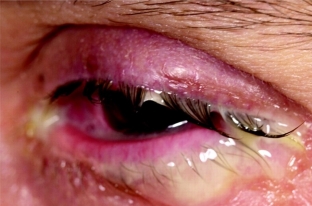In the environment and in the human body there is a huge number of different bacteria. Some of them are necessary for our body, because they are actively involved in physiological processes. Some, called conditionally pathogenic, can quietly exist in the body for a long time, and only under certain conditions cause harm to it, provoking the development of pathological processes. Many bacteria are introduced into the human body from the environment by contact, causing the development of diseases. One of these pathologies is bacterial conjunctivitis – bacterial infection of the mucous membrane of the eyelids.
Symptoms and Treatments for Bacterial Conjunctivitis
Bacterial conjunctivitis is the most common form of inflammation of the conjunctiva. This disease develops as a result of the penetration of pathogenic microorganisms into the mucous membrane of the eyelids. Often, bacterial conjunctivitis occurs in mild forms, without causing serious complications and irreversible consequences. In some cases, the disease can even stop on its own, without requiring additional use of medications. Most often, bacterial conjunctivitis develops in children, much less often in adults and the elderly. Bacterial conjunctivitis is caused by pathogens such as staphylococci and streptococci, diphtheria and gonococcal conjunctivitis develop much less frequently.
Bacterial conjunctivitis:
- acute nonspecific bacterial conjunctivitis: symptoms and treatment;
- chronic nonspecific bacterial conjunctivitis: symptoms and treatment;
- Clinical presentation and treatment of diphtheria and gonococcal conjunctivitis.
Acute nonspecific bacterial conjunctivitis: symptoms and treatment
Acute nonspecific bacterial conjunctivitis – this is the most common form of conjunctivitis. The clinical picture of the disease is quite characteristic: patients complain of the inability to open their eyes after waking up, as the eyelids stick together with copious discharge of a mucous, purulent or mucopurulent nature. The conjunctiva, transitional folds and sclera of the patient are hyperemic, the mucous membranes are edematous, lose their transparency. Both eyes are often affected, with alternate development of conjunctivitis. Treatment of acute bacterial conjunctivitis is based on the selection of an antibacterial drug, in the form of topical application of eye drops or ointments.

Chronic nonspecific bacterial conjunctivitis: symptoms and treatment
In chronic bacterial conjunctivitis, the clinical picture is less pronounced than in acute. Exacerbations of the disease occur as a result of the influence of the following factors:
- uncorrected refractive errors;
- impaired outflow from the lacrimal ducts;
- diseases of the eyelids;
- improper treatment of prior acute conjunctivitis;
- diseases of the oral cavity and gastrointestinal tract;
- inflammation of the sinuses;
- hypovitaminosis.
Patients complain of itching, burning or foreign body sensation in the eye, the symptoms are more pronounced in the evening. The hyperemia of the conjunctiva is moderately expressed, along the edges of the eyelids, a dried discharge may be noted. Treatment of chronic conjunctivitis is symptomatic: to eliminate symptoms, solutions of antiseptics, sulfonamides or antibacterial drugs are instilled into the conjunctival sac. Medicines need to be changed every few weeks.
Clinical presentation and treatment of diphtheria and gonococcal conjunctivitis
Pneumococcal and gonococcal bacterial conjunctivitis are less common than staphylococcal and streptococcal inflammations. Diphtheria conjunctivitis can occur in several forms and is characterized by the formation of dark gray films on the mucous membrane of the eyelids, which are tightly soldered to the underlying tissue and bleed when you try to separate them. Treatment of diphtheria conjunctivitis involves the administration of anti-diphtheria serum, as well as the appointment of antibiotics and topical application of antiseptics. Gonococcal conjunctivitis often develops in adults with genital gonorrhea. The infection is introduced to the mucous membrane of the eyelids by contact. Discharge in the eye area is always purulent, & nbsp; often there is a sharp swelling of the conjunctiva – chemosis. Quite often, with gonococcal conjunctivitis, keratitis develops, turning into a corneal ulcer. For the treatment of gonococcal conjunctivitis, antibiotics from the group of penicillins, cephalosporins, fluoroquinolones or tetracyclines are prescribed.







Add a comment